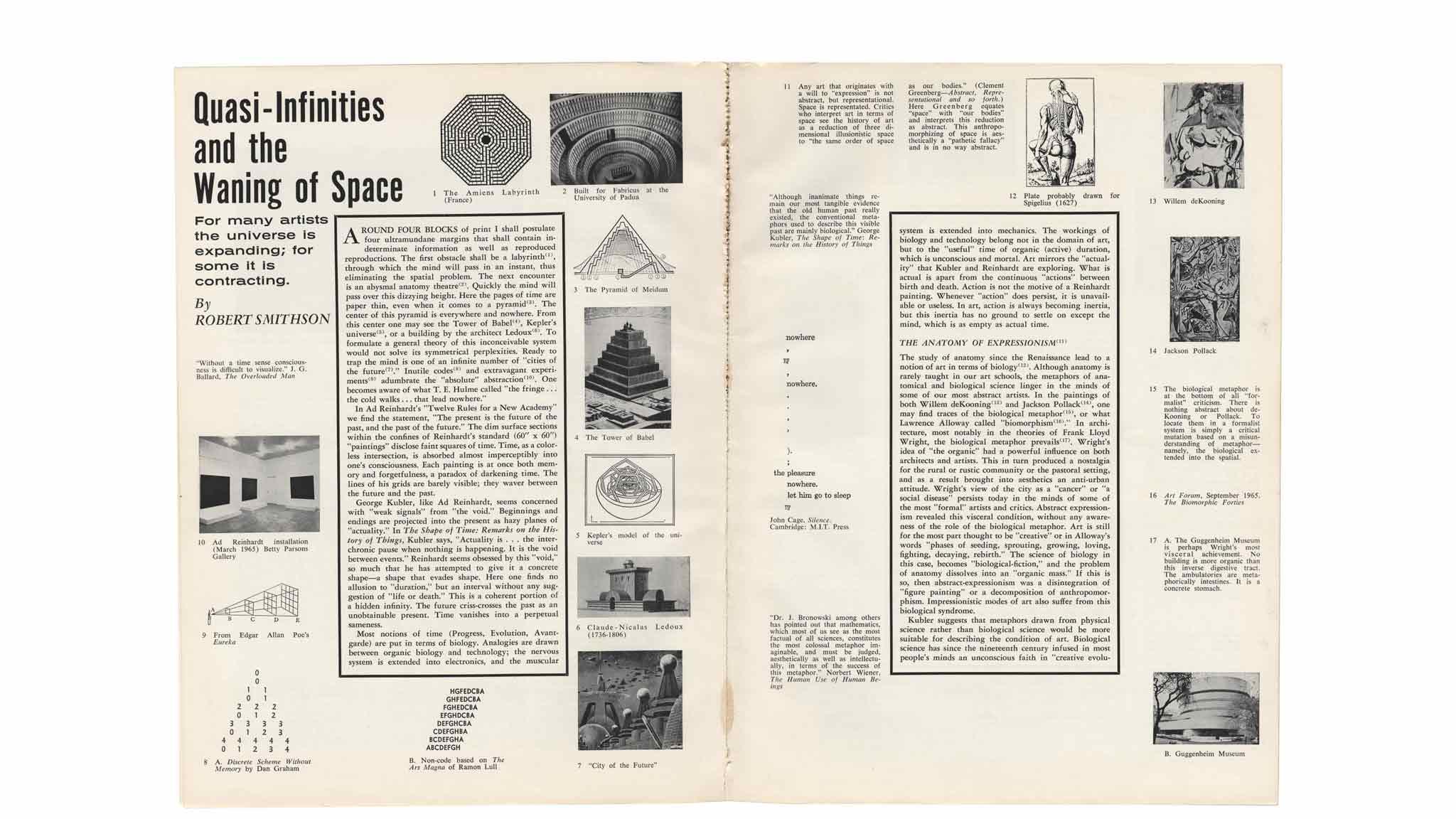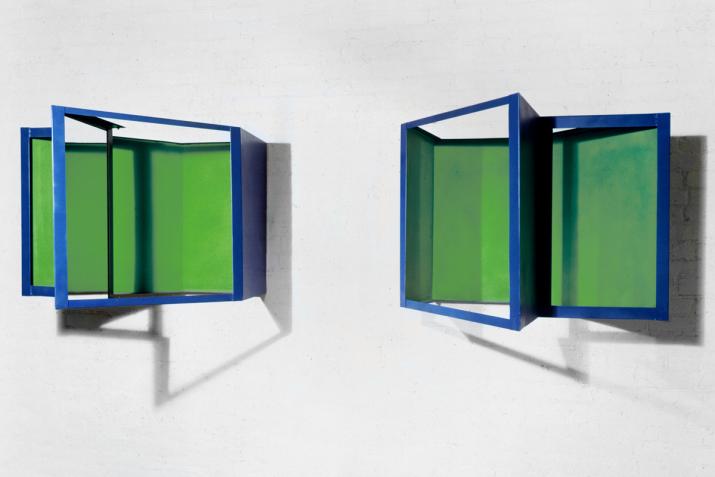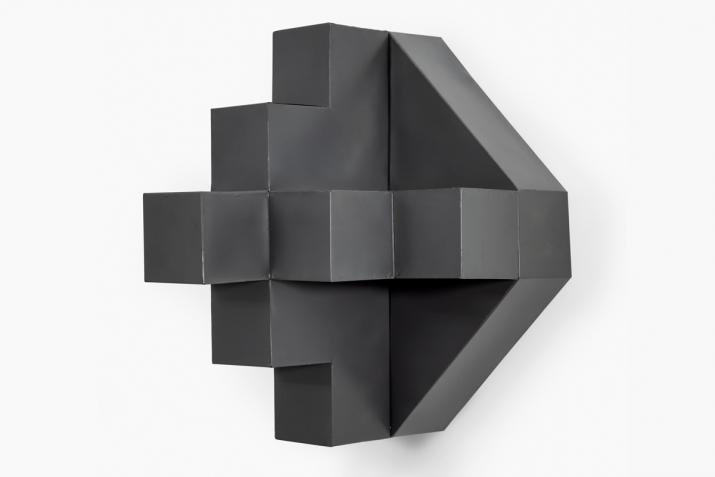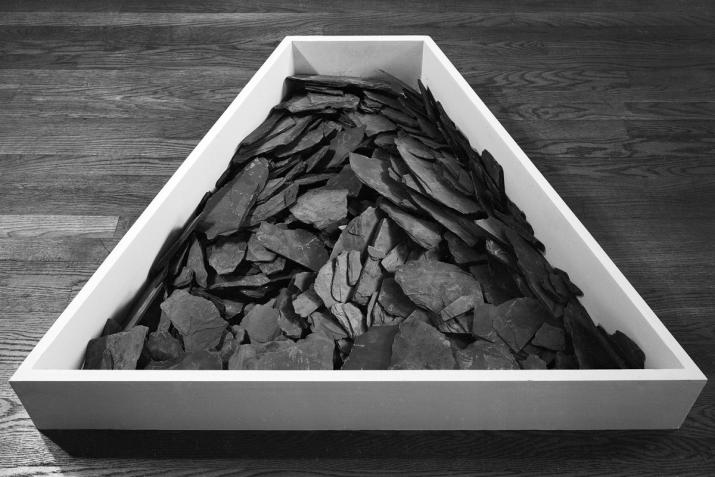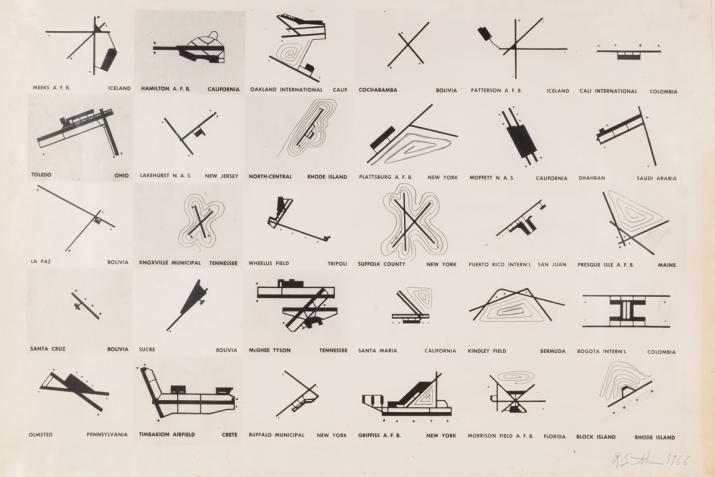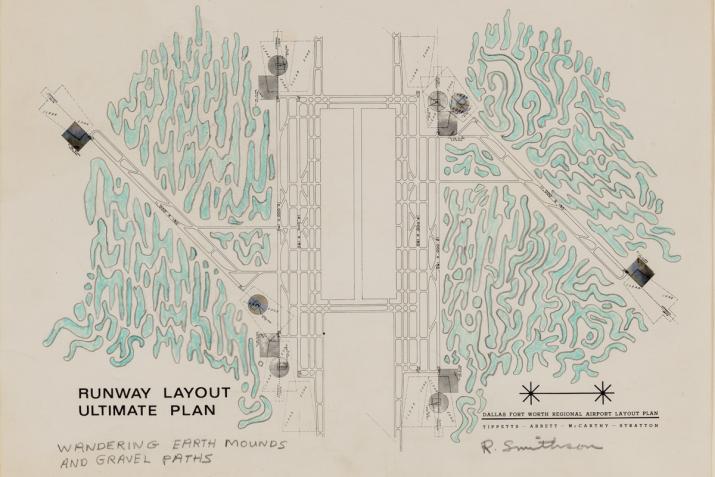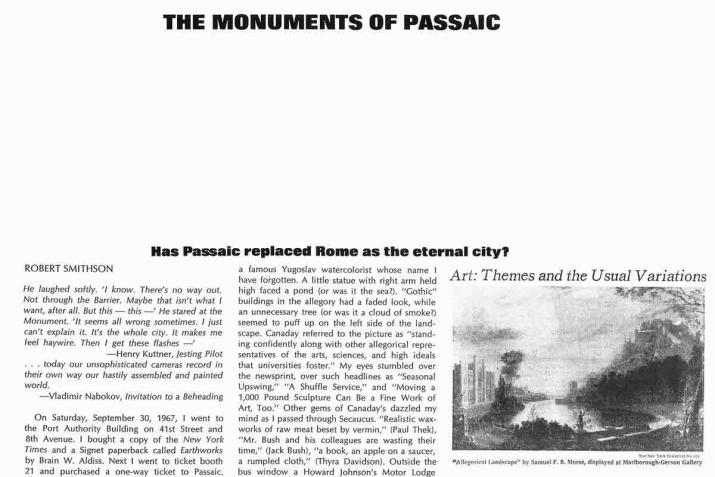Interpolation of the Enantiomorphic Chambers
Entropy and the New Monuments
A Sedimentation of the Mind: Earth Projects
The earth’s surface and the figments of the mind have a way of disintegrating into discrete regions of art. Various agents, both fictional and real, somehow trade places with each other—one cannot avoid muddy thinking when it comes to earth projects, or what I will call “abstract geology.” One’s mind and the earth are in a constant state of erosion, mental rivers wear away abstract banks, brain waves undermine cliffs of thought, ideas decompose into stones of unknowing, and conceptual crystallizations break apart into deposits of gritty reason.
Towards the Development of an Air Terminal Site
Aerial Art
A Tour of the Monuments of Passaic, New Jersey
A Provisional Theory of Nonsites
By drawing a diagram, a ground plan of a house, a street plan to the location of a site, or a topographic map, one draws a “logical two dimensional picture.” A “logical picture” differs from a natural or realistic picture in that it rarely looks like the thing it stands for. It is a two dimensional analogy or metaphor—A is Z.
